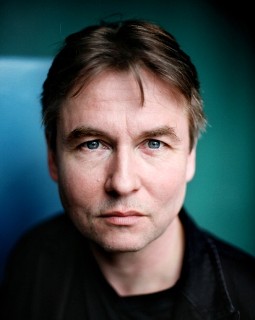|
Back
Mahler Unveiled New York
Avery Fisher Hall, Lincoln Center
11/18/2012 -
Gustav Mahler: Symphony No. 9 in D Major
Philharmonia Orchestra, Esa-Pekka Salonen (Principal Conductor and Artistic Advisor)

E.-P. Salonen (© Katja Tähjä)
Legend has it that Wilhelm Furtwängler’s music from Beethoven’s Ninth started 20 seconds before the first note sounded. Reality has it that the overwhelming Esa-Pekka Salonen’s performance of Mahler’s Ninth ended a good 30 seconds after the final note.
This was literally true. The Maestro held his baton aloft for about 20 seconds, and it took the full house audience another ten seconds to react. To which one must offer a personal sigh of relief. It took at least that long to acknowledge Mr. Salonen’s gift, as the last of the White Light Festival programs.
Then again, both Gustav Mahler and Esa-Pekka Salonen have a major commonality. Both of them will be equally renowned as composers and conductors. Only Pierre Boulez shares that honor today, and like Boulez, Salonen has an understanding which creates as much as it re-creates.
The Mahler, which rightfully should strike fear and awe in any conductor, was given the most trenchant performance, since Salonen did the almost impossible, He managed to unify all four movements, giving a cohesion–a joyous cohesion–to what some consider the tragic testament of a dying composer.
Externally, the Maestro offered blazing tempos. That first movement was speeded along, from the “farewell” sighs of the cellos through the lyrical themes to music which never paused, never lost its way. Some might have missed the bitterness of the climaxes, the dissonances, but methinks Mr. Salonen preferred the glory of the music to emotional aberrations. After all, the orchestration here (for music which Mahler never heard, never revised with the reality of sound, as he was wont to do) can be a jumble. Giving it clarity was a priority from which Mr. Salonen never swayed.
The second movement was another revelation. One commentator has called it the “Dance of Death” but Mr. Salonen played it...well, as a dance. A dance of life. It was a bit rough and tumble, but the composer loved those folkish pieces, and, with the addition of the following Rondo-Burleske allowed himself a bit of easygoing happiness.
With that third movement, the “burleske” was overwhelming. This was almost the Stravinsky of the ballets: it was sarcastic but not bitter, the irony, the klezmer-style winds, were not only crisp, they brought on a the atmosphere of a circus.
And why not? Mahler’s humor was sometimes mordant, but it was sometimes...well, simply a joy. I have a feeling that, rather than being afraid of death, he could look over a life more artistically fulfilling than any human had a right to feel.
And then we had the finally, which had an almost unbearable intensity. Others have rivaled Mr. Salonen in that finale–I think of Walter’s recording or hearing Bernstein take this on with equal intensity–but Mr. Salonen had two advantages in this performance.
One, as noted, is that as a composer, he could climb from mountains and valleys and up again to higher peaks as if he created them himself. Secondly, the Philharmonia of London simply has the most beautiful strings and brasses that one could possibly hear.
Perhaps the stringency, the cutting edge is missing. But when it came to the trumpet, horn and trombone calls as well as ensemble work, the brasses had the clarion calls of the Empyrean. As for the string section, it was as if Mr. Salonen had pressured each player not allow a nanosecond to go on without utter consequentiality.
The test should of course be those last pages of the Ninth which sometimes goes into a dying fall, as if the composer was ready to kick the bucket and these were his last words. True, Mahler specifies a “dying away” for the last pppp sounds. But that was a musical notation, not autobiographical. Mr. Salonen seemed to have taken the full orchestral sound and slowly stripped all the excesses, all the clothing, the vestments, leaving...
Well, leaving the essence. Not the heavenly essence of a Mozart. But the essential mortalfeelings of a human. After that, what choice did the conductor have but silence?
Silence as veneration, for the composer and for us to gather our memories of an incredibly memorable performance.
Harry Rolnick
|